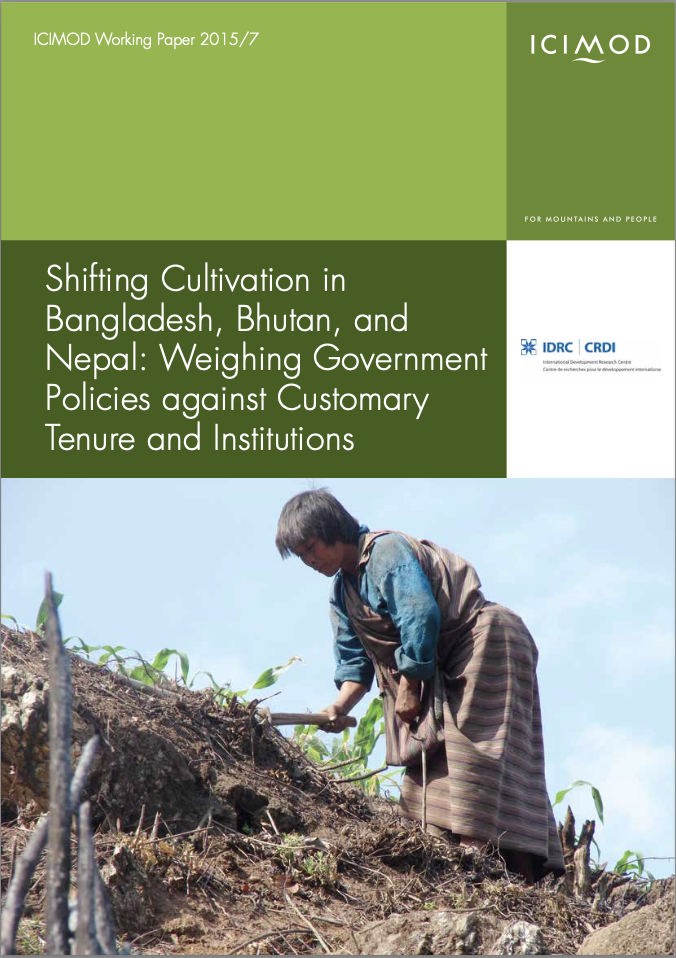Resource information
International Centre for Integrated Mountain Development (ICIMOD)
Shifting cultivation is a dominant form of farming in the eastern Himalayas, practised by a diverse group of indigenous people from the most marginalized social and economic groups. The survival of these indigenous people and the survival of their forests are inextricably linked. However, policy makers and natural resource managers perceive shifting cultivation to be wasteful, destructive to forests, and unsustainable. Although policies have tried to ban it or ‘wean’ shifting cultivators away from the practice by incentivizing them to take up alternative options, shifting cultivation persists. Others argue that shifting cultivation should be permitted as it is not only steeped in culture and tradition, but constitutes the main source of livelihood for many shifting cultivators. These two points of view are at odds with each other and do not seek a pragmatic approach. As a result, neither the livelihood issues of the shifting cultivators nor the health of the forest ecosystems on which shifting cultivation depends are properly protected. At the same time, the growing population and intrusive market forces call for improvements in shifting cultivation. Therefore, shifting cultivators and policy makers have no choice but to seek common ground to improve shifting cultivation for farmers and forests. A joint solution is also required to address climate change as good forest cover plays a prominent role in the sequestration of greenhouse gases such as carbon dioxide.
The work of the Nagaland Empowerment of People through Economic Development (NEPED) project and the International Centre for Integrated Mountain Development (ICIMOD) in Northeast India, Bhutan, and Nepal has confirmed that it is possible for policy makers and shifting cultivators to work together. However, more research is necessary to understand how the shifting cultivation policies of governments can be more supportive in addressing the needs of shifting cultivators. The need for more knowledge to understand and address shifting cultivators’ land tenure problems becomes clear. In addition, a review of the land use alternatives promoted by governments is also necessary. As a result, a research project titled ‘Regional Project on Shifting Cultivation: Promoting Innovative Policy and Development Options for Improving Shifting Cultivation in the Eastern Himalayas’ was implemented in Bangladesh, Bhutan, and Nepal.
Research teams were formed in the three countries, which, together with ICIMOD’s project team, prepared a research protocol. The research teams carried out the research for their respective countries in keeping with this research protocol. This publication is the main product of their research. It is divided into two parts: Part 1 presents the findings of the study on the effect of government policies on customary tenure and institutions and alternative options. Part 2 presents a discussion of the findings of the three countries as well as some general and country-wise recommendations. It is hoped that the findings of the research will enable governments to improve their shifting cultivation polices, which will, in turn, help shifting cultivators to improve their economic and social status.


